I once heard the adage “Oregon kids are tough!” and it couldn’t be more true for the students from Pinehurst School. Most kids, when presented with the prospect of hiking off-trail towards a destination where they would be expected to put in some hard work to pull weeds, would be understandably unenthused. However, the Pinehurst students, their parents, and teachers started trooping down the hillside full of curiosity and good humor. As we began our hike –with a path marked the previous day with fluorescent orange tape– we were swallowed up by a rolling landscape of oak savannah. This certainly made our wayfinding easier as we were greeted by widely spaced trees casting gentle shade and quiet meadows interspersed along our path.
We were joined by BLM Interpretive Ranger John Duwe and soon paused in one such meadow. Even though we could hear the distant roar of I-5 over the hill, the little world we had entered felt set apart. John Duwe led the students in an activity where they matched a rainbow of paint chips to the natural colors around us. It certainly made us realize that nature is full of colorful surprises when you look carefully!
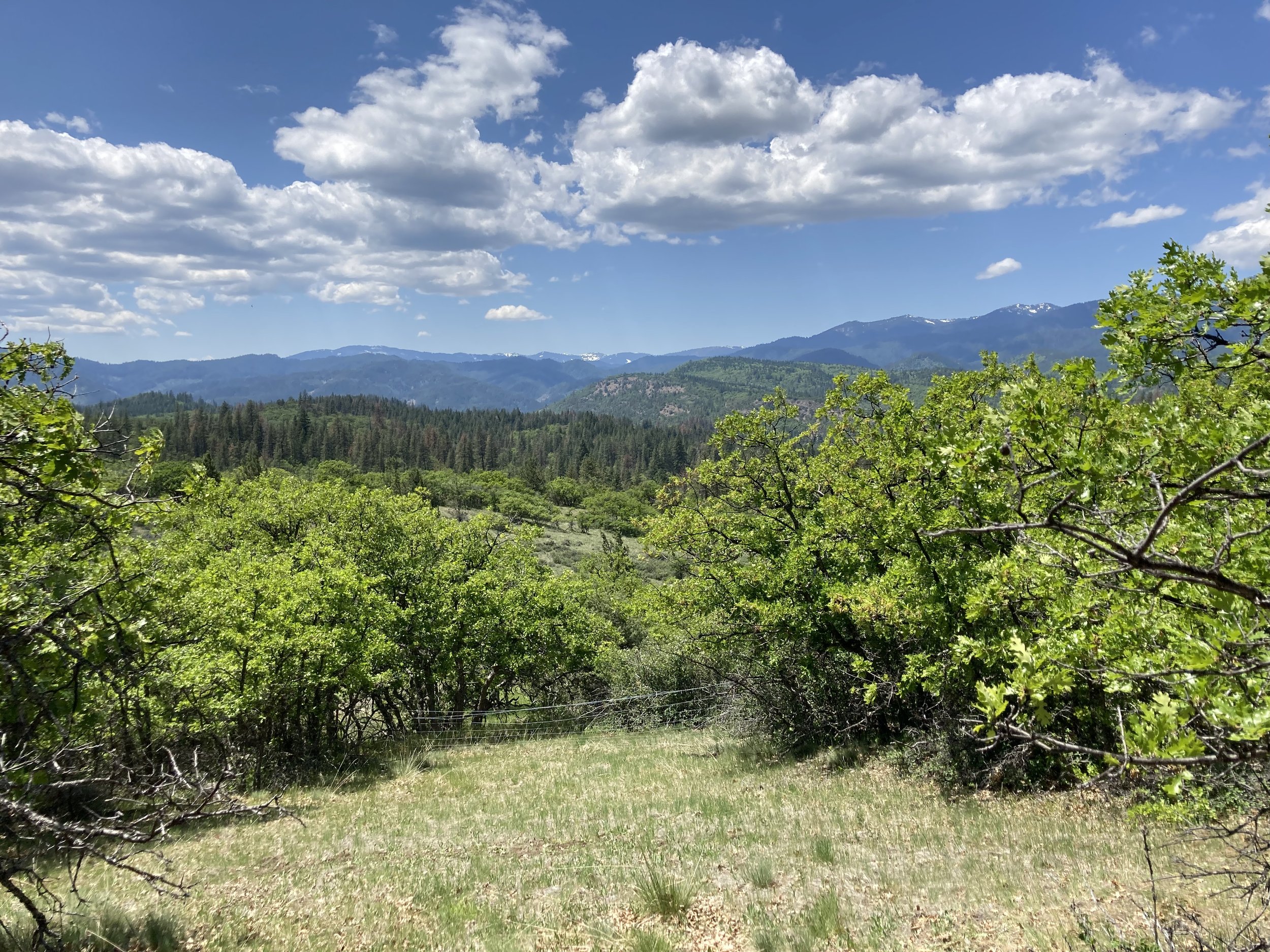
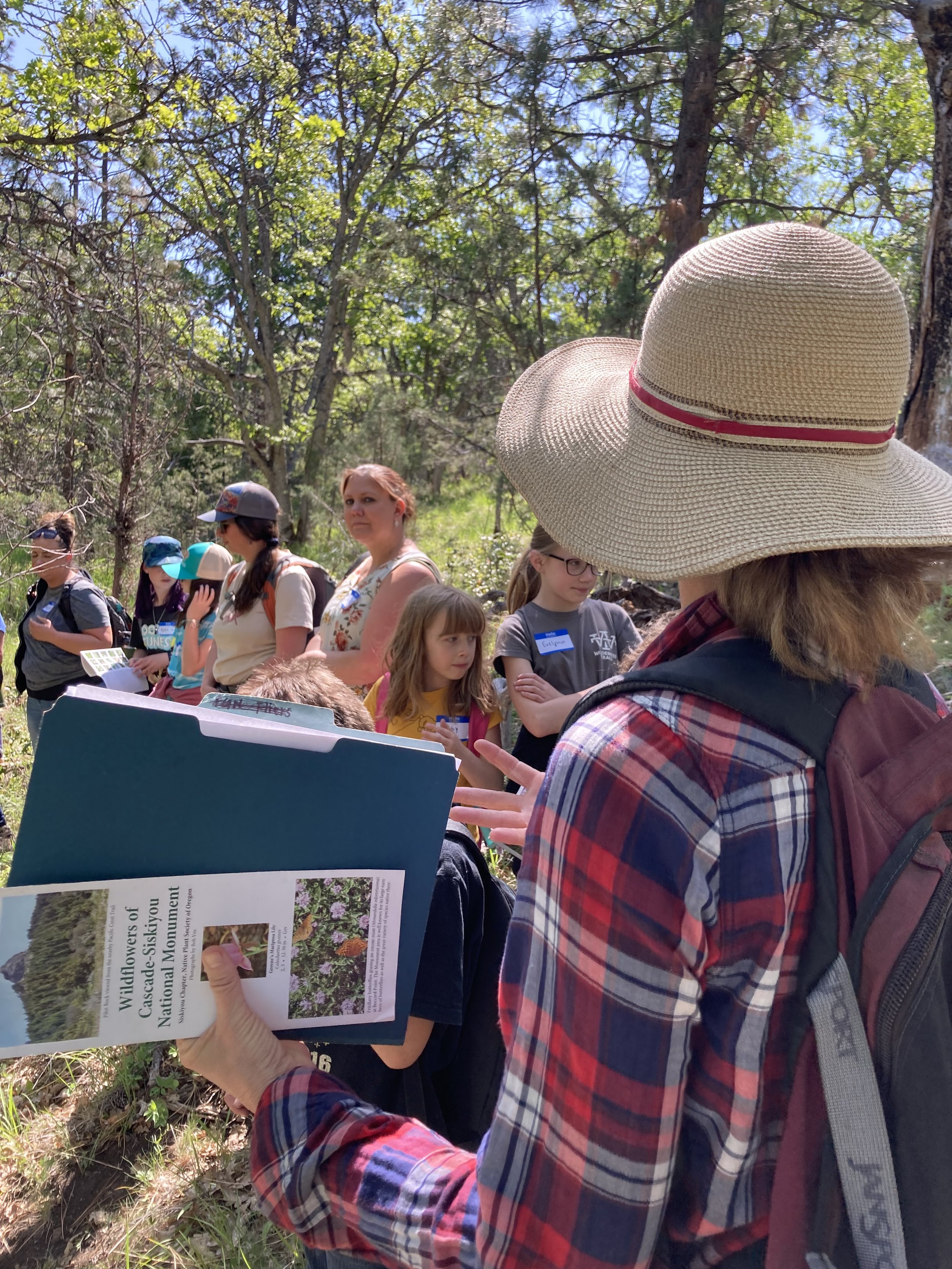
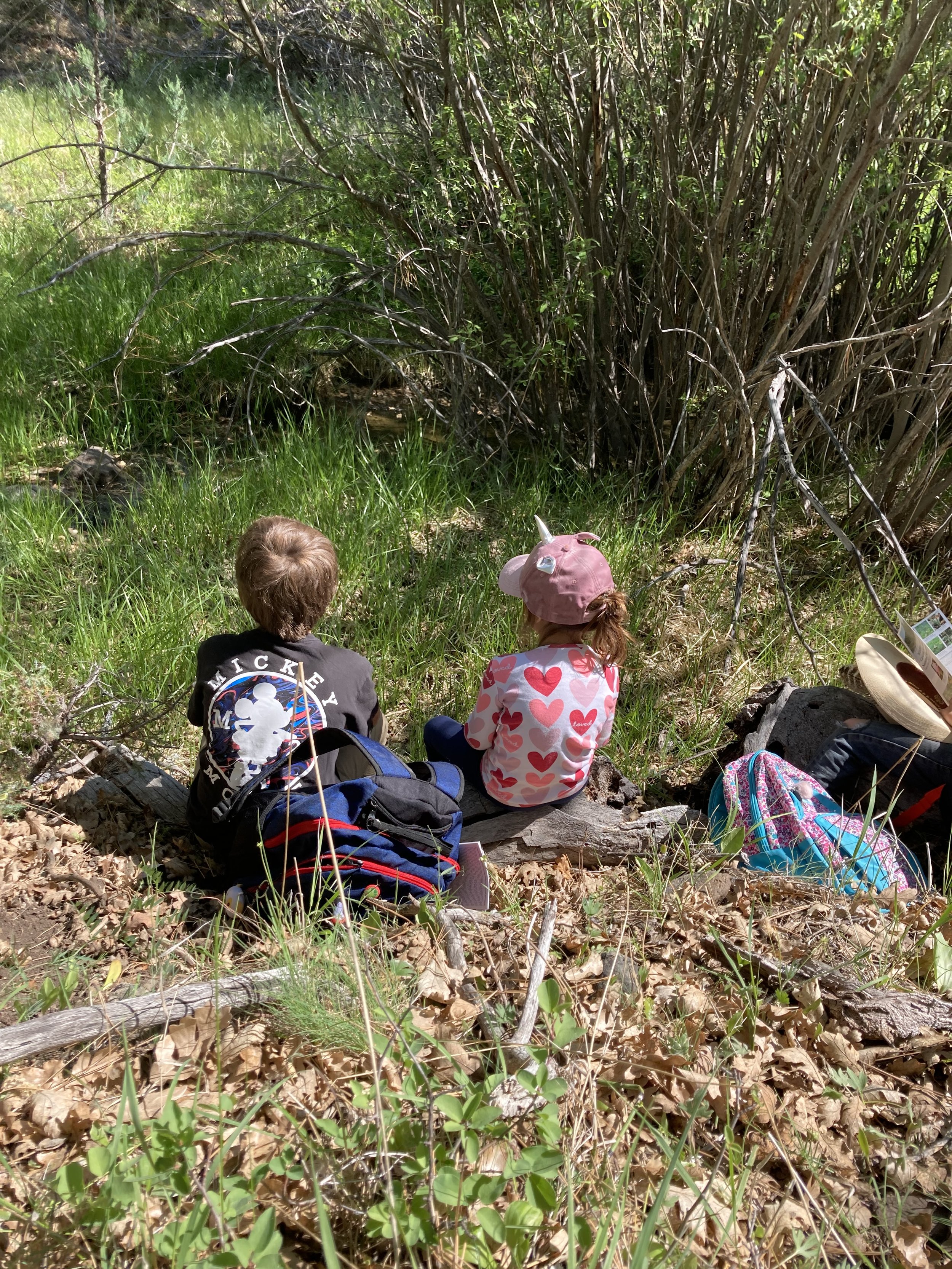
The trail we blazed led us down into several draws. In the second, we found a flowing creek where we could see practical examples of how humans can aid in restoring streams and riparian areas. We observed budding willow stakes cut from the large willows upstream and placed by volunteers the year before. We also saw rock dams which, to the uninitiated, are just that simple: Rocks placed in a row perpendicular across the stream to slow the flow and spread the water further across the landscape. While it’s not quite as impressive as what a beaver could do, rock dams are still valuable tools we can utilize to rehabilitate the area.
After carefully crossing some treacherous mud, we began our ascent up the final hill toward a large, stately ponderosa pine and a couple of juniper trees that marked the area where we would pick yellow star thistle. The thistle, Centaurea solstitialis, is native to Eurasia but has become invasive in much of the United States, including Oregon. In particular, it has had an outsized impact on native grasslands, which are among the most important and endangered ecosystems in the United States. Native grasslands are essential for increasing and maintaining biodiversity by providing wildlife habitat, but they also contribute to water quality and quantity through root filtration and increased water holding capacity. They even store high amounts of carbon for sequestration!
As we walked, we could feel the dead stalks and flower heads from last year’s thistle catching on our clothes and scratching our skin. While it was clear that the entire preserve could use many more hands to help control the noxious weed, we had our mission for that day and found a large square plot already marked with rebar and orange flags. The plot is one of eighteen grassland areas selected in 2020 within the Monument boundary as part of the BLM’s Grassland Restoration Project in partnership with the Sampson Creek Preserve and The Understory Initiative. One of the project’s objectives is to test the efficacy of various treatments for removing weeds such as yellow star thistle.
Collette Streight, Executive Director of the Friends of the Cascade-Siskiyou National Monument, showed the students how to identify the plant. Somewhat at odds with its spiny flowers, the leaves of the young yellow star thistle are soft to the touch. Many of the students described them as “fuzzy!” Collette showed us that the most important thing to remember was to get as much of the root as possible. If we get the whole root, the plant will not be able to come back. Once we were confident that all students and volunteers could adequately identify the plant, we set to work. Slowly, we picked our way across the plot, digging out the small plants with fingers and sticks. Occasionally, someone would get a particularly long root and show it off to enthusiastic shouts of admiration. Soon, it became a contest to see who got the longest root! Yet even hard work flies by with friends, and shortly it was time for lunch. As everyone scrambled for one or two final plants, we realized they were much more challenging to find than when we had started!
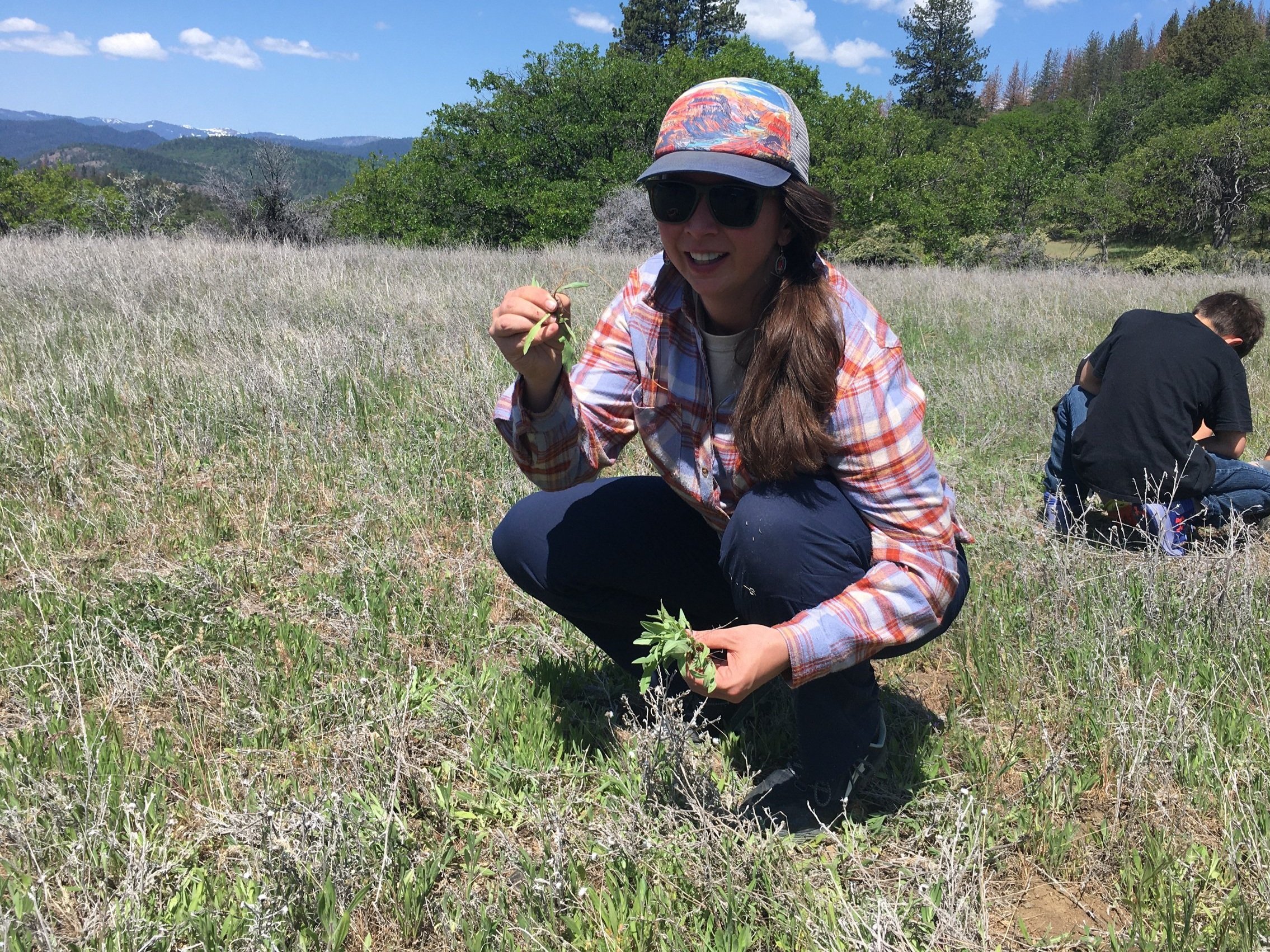
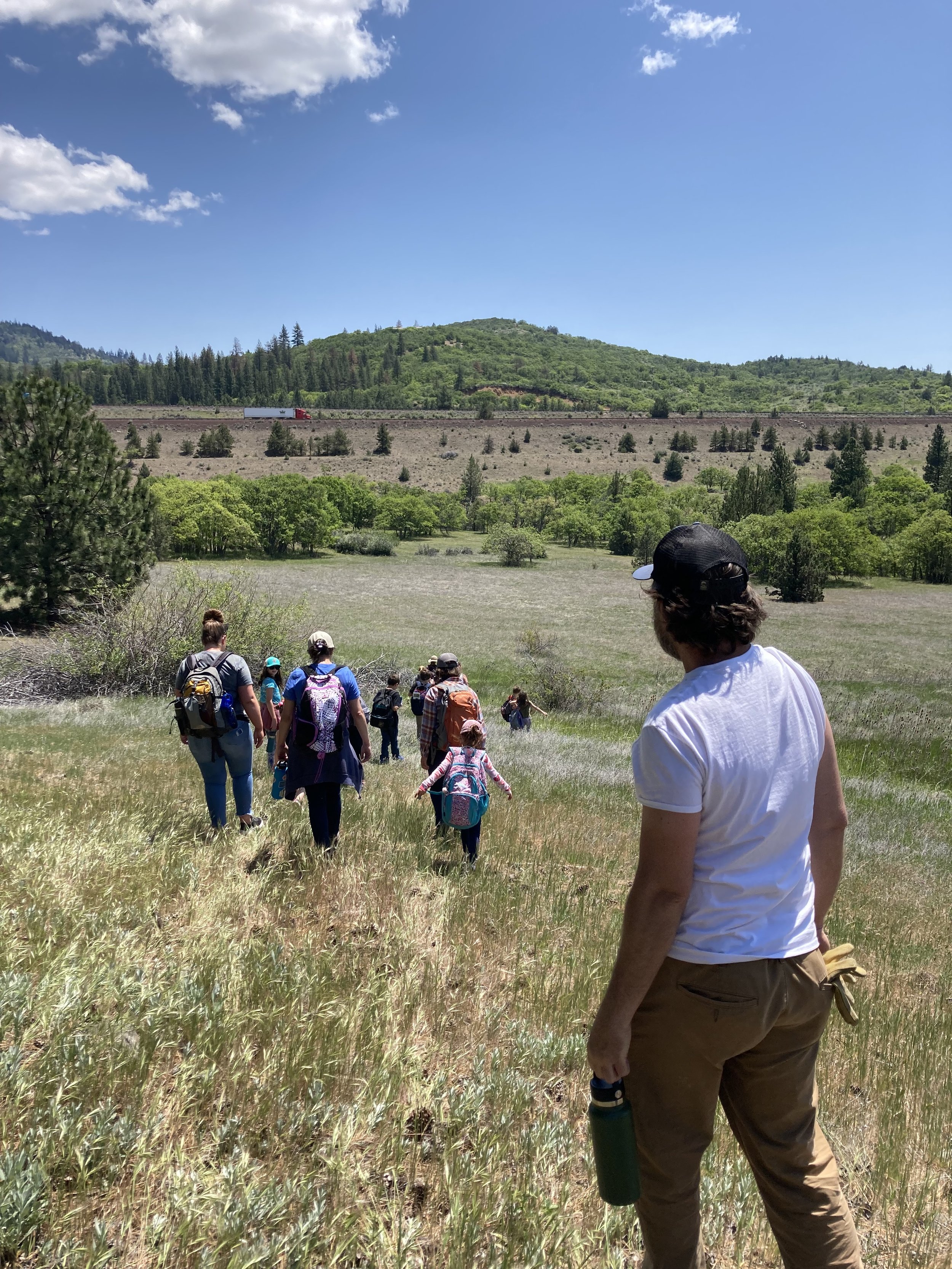
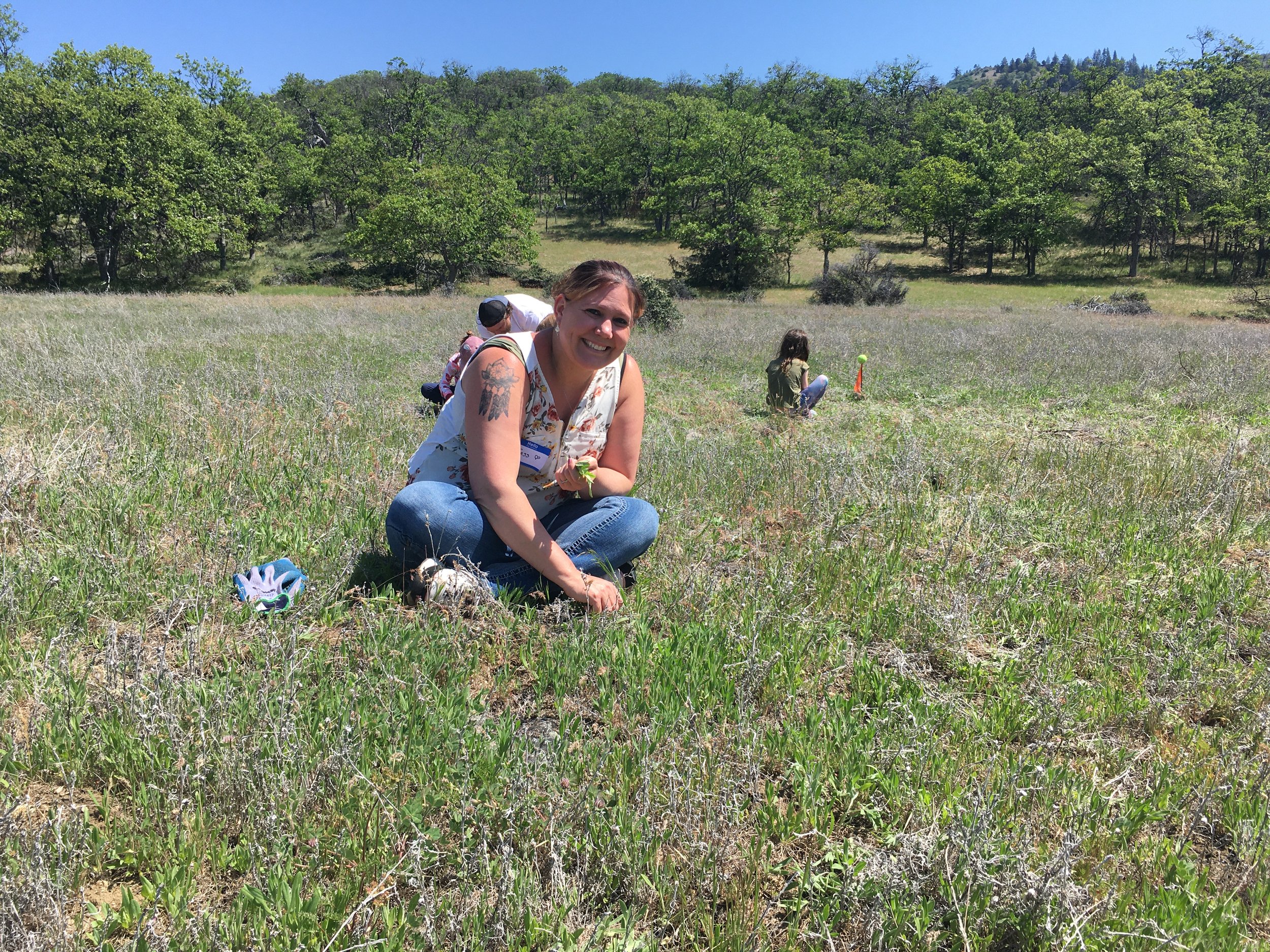
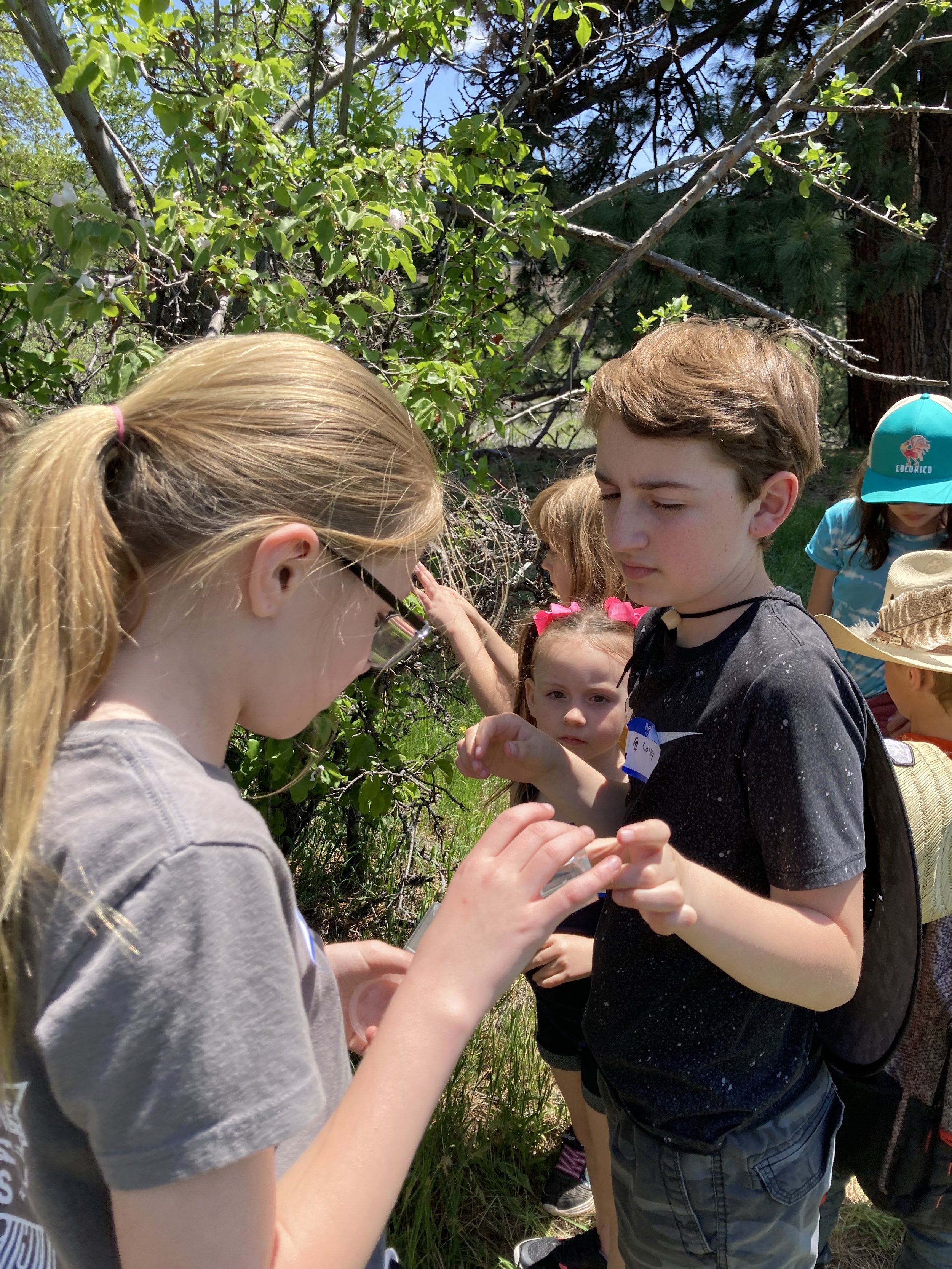
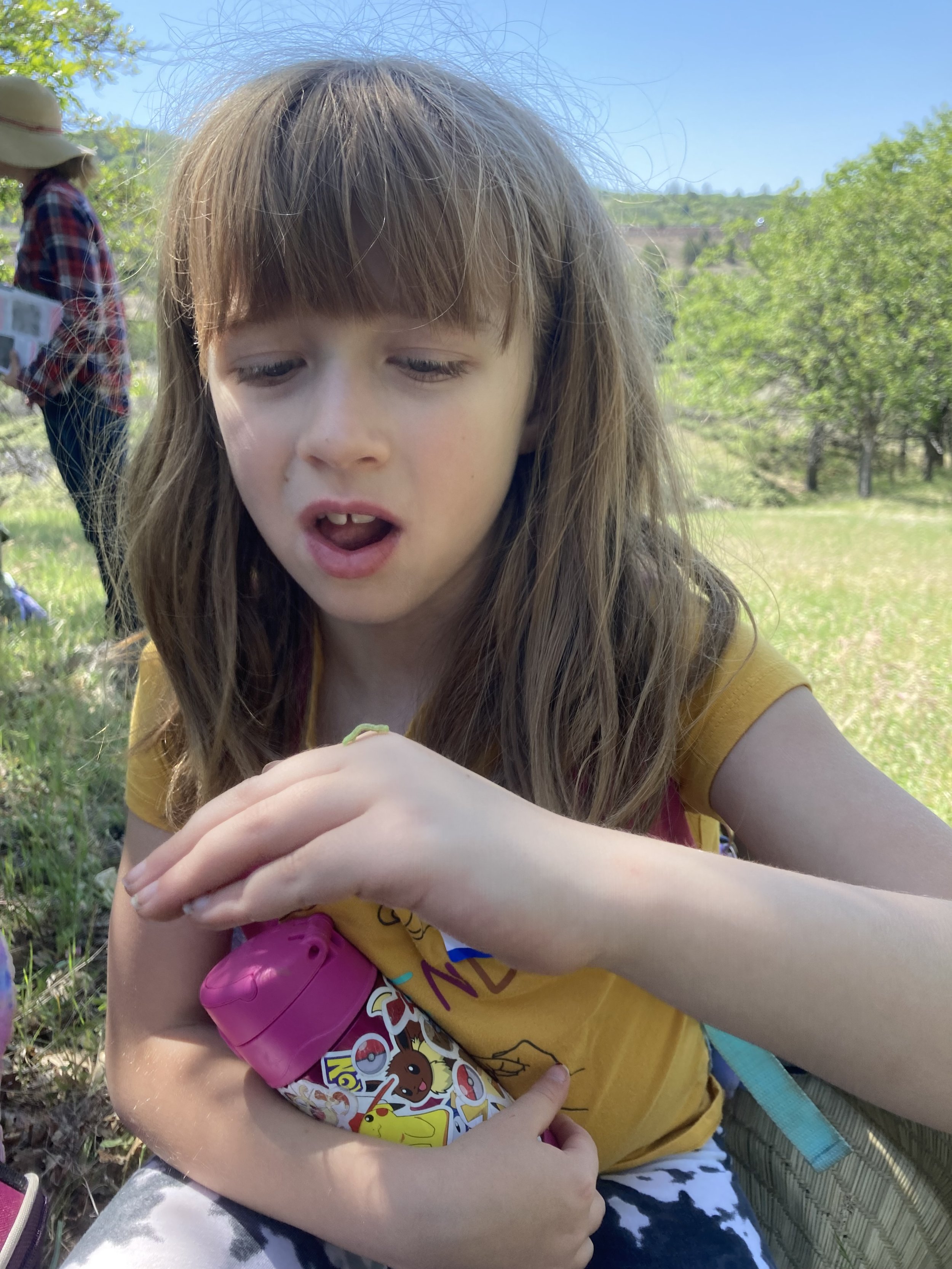
Lunch was had at the base of the tall ponderosa we had passed on our way in. While some enjoyed their sandwiches and snacks, many of the students explored the old apple trees planted as part of a long-gone homestead on the site. Soon, we harnessed this creativity, and Collette led the students in an activity that had them find a plant or insect they didn’t recognize and spend some time observing it. They were encouraged to observe using their senses and get to know the plant by asking questions, even if they may not have the answers. At the end, we all took a tour of each other’s new botanical and insect friends.
Soon it was time to trek back to the cars and bid Mariposa Preserve goodbye. It was bittersweet because we all left feeling a greater sense of connection to this little corner of the Monument, but also knew we had left it better than we had found it.

